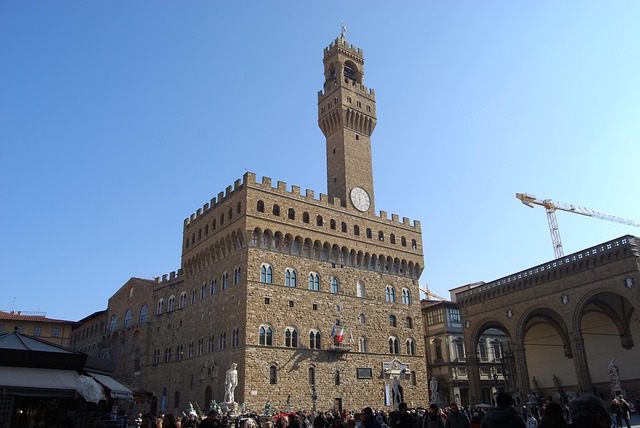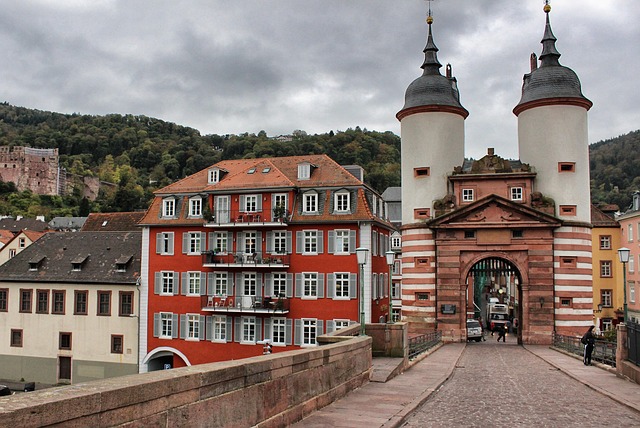Florence, Oregon, thrives along the Siuslaw River, boasting a rich maritime history intertwined with its founding and cultural evolution. Settlers recognized the river's potential for logging and trade in the 19th century, transforming Florence into a bustling port town. The Siuslaw River facilitated timber transportation, shaping the city's economy and leaving an indelible mark on its character. Historical landmarks like the waterfront and bridges echo this maritime heritage, while the logging industry contributed to Florence's unique identity as a coastal gem in Oregon's tapestry. Today, these historical elements preserve its past and foster a vibrant cultural center, reflecting its adaptation from a logging hub to a thriving cultural destination.
Florence’s rich history is deeply intertwined with its coastal location and surrounding natural resources. Founded in the early 1800s, this charming town emerged as a bustling port, leveraging its strategic position on the Siuslaw River. The river, a lifeline for the community, facilitated trade and transportation, fostering Florence’s maritime history. Beyond fishing, logging played a pivotal role in shaping the area’s landscape and economy. Through the years, Florence experienced cultural transformations, leaving behind unique historical landmarks that tell the story of its diverse origins.
- Florence's Early Beginnings and Maritime Roots
- The Siuslaw River: A Lifeline for the Community
- Logging: Shaping Florence's Historical Landscape
- Cultural Transformations Over Time
- Unveiling Florence's Historical Landmarks
Florence's Early Beginnings and Maritime Roots

Florence, nestled along the picturesque Siuslaw River, boasts a rich maritime history that intertwines with its founding and cultural evolution. The city’s origins date back to the mid-19th century when early settlers recognized the river’s potential for logging and trade. The Siuslaw River, with its strong currents and abundant resources, became a vital lifeline, facilitating the transportation of timber and fostering the development of Florence as a bustling port town.
This maritime heritage is evident in Florence’s historical landmarks, such as the charming waterfront and historic bridges that once served as gateways for goods and people. Beyond fishing, the city’s cultural evolution was heavily influenced by logging, shaping its economy and character. The industry left an indelible mark on Florence, contributing to its resilience and unique identity as a coastal gem in Oregon’s tapestry.
The Siuslaw River: A Lifeline for the Community

The Siuslaw River, winding its way through the heart of Florence, has played a pivotal role in shaping the community’s founding history and maritime heritage. Since its early days, this river has been a lifeline for the region, fostering economic growth and cultural evolution. The rich logging industry, once a cornerstone of Florence’s past, thrived thanks to the easy access to transportation routes provided by the Siuslaw. As the city grew, so did its relationship with the river, solidifying its status as an essential component of Florence’s historical landmarks.
The river’s significance extends beyond economic value; it has woven itself into the very fabric of Florence’s cultural identity. Over time, the Siuslaw has inspired artists, attracted visitors, and fostered a deep sense of community among its residents. Its waters, once bustling with logging rafts, now reflect the city’s pride in its maritime history and the diverse ways it has adapted throughout its evolution.
Logging: Shaping Florence's Historical Landscape

Florence’s rich maritime history is deeply intertwined with its past as a logging hub, leaving an indelible mark on the region’s cultural evolution. Since its founding, the city has been closely connected to the Siuslaw River, which served as a vital transportation artery for both people and goods. The river’s significance in Florence’s early years cannot be overstated; it facilitated trade, supported the local economy, and shaped the town’s very fabric.
The logging industry played a pivotal role in Florence’s historical landscape. Massive timber operations along the Siuslaw River contributed to the city’s growth, attracting workers and fueling its development as a bustling maritime center. These logging efforts not only provided raw materials for construction but also fueled the creation of various historical landmarks that still stand today, reflecting Florence’s rich past.
Cultural Transformations Over Time

Florence’s rich history is intertwined with its cultural transformations over time, shaped by its location along the Siuslaw River and its maritime heritage. From its early days as a founding settlement, Florence has evolved from a small logging community to a vibrant coastal city. The Siuslaw River, a significant waterway, played a crucial role in the region’s development, facilitating trade and transportation for decades.
The city’s cultural evolution is also marked by the decline of its traditional logging industry and the rise of new sectors. Historical landmarks like the old mills and warehouses along the riverfront tell stories of Florence’s past as a bustling maritime hub. Today, these structures not only serve as reminders of the town’s founding history but also symbolize its ongoing cultural transformation, adapting to new economic opportunities while preserving its unique heritage.
Unveiling Florence's Historical Landmarks

Florence, nestled along the scenic Siuslaw River, boasts a rich maritime history that intertwines with its founding and cultural evolution. Since its inception, the city has been shaped by its proximity to the water, which not only facilitated trade but also fueled its economic growth, especially during the logging industry’s heyday. The Siuslaw River, a vital lifeline, has played a significant role in the region’s development, serving as a passageway for goods and a source of sustenance for local communities.
Unraveling Florence’s historical landmarks reveals a story of resilience and adaptation. As the city grew, so did its cultural tapestry, reflecting the diverse influences that have shaped it over the years. These landmarks not only tell the tale of Florence’s past but also serve as a gateway to understanding its present and envisioning its future, all while paying homage to its deep-rooted maritime heritage.
